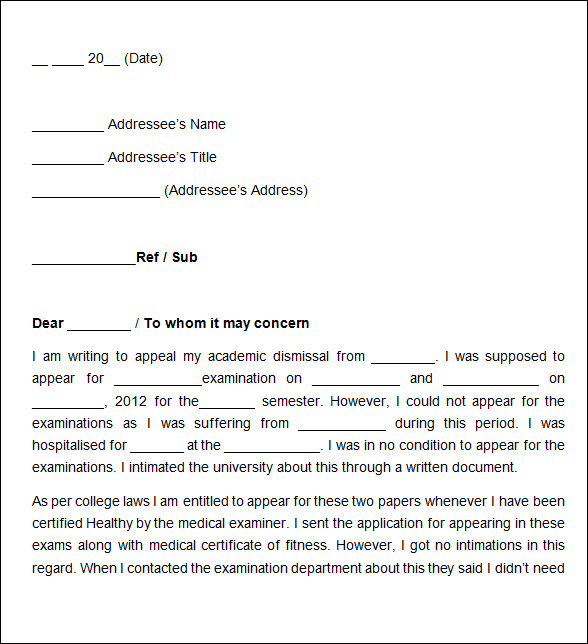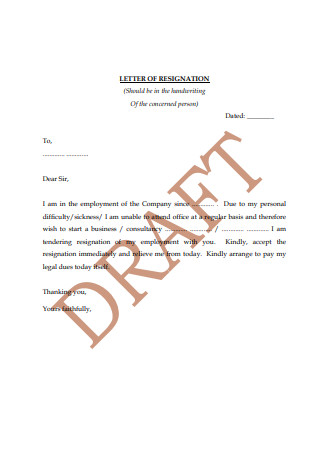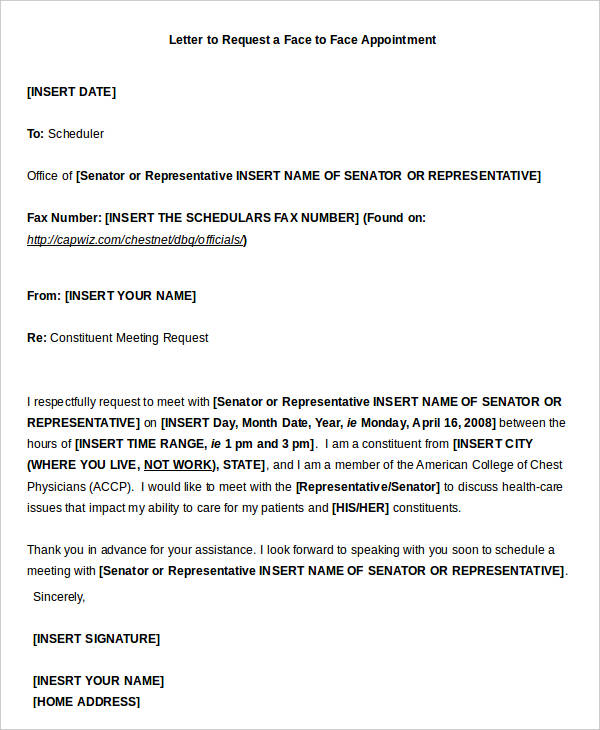Getting your thoughts heard, truly heard, can feel like a big challenge, can't it? When you want to bring about a change, whether it's for your neighborhood or a wider cause, a petition letter is that really powerful way to gather support and show just how many people feel the same way you do. It’s a way to let decision-makers know that a lot of people care about something specific, you know, and want to see something different happen.
Often, these kinds of letters can come across as a bit stiff, or a little formal, which sometimes makes them hard for folks to connect with on a deeper level. They might be full of official-sounding words and long sentences that make people just skim them rather than truly feel what you're trying to say. That dryness can, in a way, make your message less impactful, even if the issue itself is very important. It's almost like putting up a wall between your idea and the people you hope will support it.
This discussion will look at how we can make these important messages resonate more, to genuinely reach out and encourage action from people who might otherwise just pass by. We’ll talk about ways to bring a warm, human touch to your words, so that your petition letter doesn't just ask for a signature, but truly invites someone to join a cause they believe in. It’s about making your words feel like a conversation, rather than a dry request, so that people actually want to sign.
- Adventure Time Characters
- Victorian Names And Surnames
- Memes Veterans Day
- Rosemarie Fritzl Still Alive
- What Happened To Lisa On The Bay
Table of Contents
- What Makes a Petition Letter Connect?
- The Heart of Your Message - A Sample of Petition Letter's Core
- How Can You Start a Petition Letter with Warmth?
- Opening Lines - A Sample of Petition Letter's Beginning
- Why is the Body of a Petition Letter So Important?
- Building Your Case - A Sample of Petition Letter's Middle Ground
- What's the Best Way to Ask for Support in a Petition Letter?
- The Call to Action - A Sample of Petition Letter's Closing Thoughts
When thinking about making writing more relatable, we often consider how we speak to one another, rather than how we write for a formal document. The text you shared, for example, talks about finding sounds very quickly: "Find the perfect sound in seconds," or "Find the melody sound you are looking for in seconds." It also mentions collections of audio samples like "Cool synths one shots pack collection of audio samples" and "Brazilian funk pack collection of audio samples," describing them with words like "aggressive, bassy, cold, dark, fat, low, one shot, short, and synthesizers." While this language is direct and clear for its purpose – helping someone find specific audio elements – it doesn't really have that personal, inviting feel we want for a petition letter, you know? It's about efficiency, not emotional connection. To make a petition letter work, we need a different approach, something that feels more like a shared concern.
A good petition letter, really, moves beyond just listing facts. It aims to create a feeling of shared purpose, almost like you're having a conversation with someone who cares about the same things. Instead of just stating a problem, it paints a picture of what that problem means for real people, or how a solution could make things better for everyone involved. It’s about building a bridge of understanding, so that readers don't just see words on a page, but feel a connection to the issue at hand. This means choosing words that speak to the heart, not just the head, so that people are moved to take action.
The core idea of humanizing any kind of writing, especially something as important as a petition, is to make it feel less like a formal request and more like a sincere appeal from one person to another. This means using language that is warm and approachable, the kind you might use when talking to a neighbor about a shared concern. It involves moving away from stiff, official-sounding phrases and instead choosing words that invite empathy and shared feeling. For instance, instead of saying "The aforementioned issue causes considerable detriment," you might say, "This problem is really making things hard for folks around here," which is a lot more relatable, so it is.
- Miley Cyrus Net Worth 2024
- All Time Great Catchers
- What To Write In Goddaughters Christening Card
- Who Were Sam Elliotts Wives
- Snowden Wife
What Makes a Petition Letter Connect?
What really makes a petition letter stand out, and get people to pay attention, is its ability to reach out and touch someone's feelings. It’s not just about listing points or facts; it’s about showing how a situation impacts real people, their daily lives, and their hopes for the future. When you write from a place of genuine concern, and you show that you truly understand the worries or desires of others, your words carry so much more weight. It’s about finding that common ground, that shared feeling, that gets people nodding their heads in agreement, and saying, "Yes, I feel that way too," or "I want to help with that," you know?
To do this, you want to focus on clarity, yes, but also on kindness and a bit of warmth in your words. Think about what your audience already cares about, what matters to them in their own lives. Then, frame your message in a way that connects to those values. If you're talking about a park, for instance, don't just say "The park needs repairs." Instead, you might talk about children not having a safe place to play, or families missing out on a peaceful spot to relax together. That kind of detail, that shared human experience, is what makes a petition letter truly connect with people, almost like a conversation.
The Heart of Your Message - A Sample of Petition Letter's Core
The very center of your petition letter, its true heart, is where you tell everyone what the problem is and why it matters. This part needs to be very clear, but also very human. Instead of using big, formal words to describe a problem, try to explain it like you would to a friend over coffee, you know? What's the real situation, and how does it make things difficult or unfair for people? That's the feeling you want to get across, so it is.
For example, if you're writing about a busy street that needs a crosswalk, a formal way might be: "The absence of a designated pedestrian crossing facility at the intersection of Maple and Elm Streets presents a significant safety hazard." A more human way, for a sample of petition letter, might go something like this: "Right now, crossing Maple and Elm Streets feels really scary for families, especially for our kids trying to get to school. There’s no safe spot to walk across, and we worry about accidents every single day." See how that second one feels more immediate, more personal? It gets to the heart of the matter by talking about people's feelings and fears, which is very effective.
How Can You Start a Petition Letter with Warmth?
Starting your petition letter with a friendly, inviting tone is a bit like welcoming someone into your home. You want them to feel comfortable and interested right from the first few words. If your opening is too formal or stiff, people might just glance at it and move on, which is a real shame when you have something important to share. A warm beginning helps people feel like you're talking directly to them, not just at them, and that makes a big difference, you know?
Think about what would make you want to keep reading if you picked up a letter. It’s often something that feels personal, or that hints at a shared experience. Maybe it's a question that makes you think, or a short, relatable story. The goal is to make the reader feel like they're part of a conversation, not just a recipient of information. This sets a good tone for the rest of your message, and it makes people more open to hearing what you have to say, so it does.
Opening Lines - A Sample of Petition Letter's Beginning
The very first sentences of your petition letter are your chance to grab someone's attention and let them know why they should care. Instead of jumping straight into formal demands, think about starting with something that connects with their everyday life or a feeling they might share. It’s about building a bit of common ground right away, you know, making them feel like you’re on the same team, in a way.
For a sample of petition letter, consider this: instead of "We hereby submit this petition regarding the proposed zoning change," you could try something much more inviting, like: "Have you noticed how our quiet neighborhood feels a bit different lately? We're writing to you today because something big is being planned for our community, and we believe it could really change the way we live here." That second option feels much more like a conversation, doesn't it? It invites the reader in by asking a question and hinting at a shared experience, which is very effective for getting people to read on.
Why is the Body of a Petition Letter So Important?
The middle part of your petition letter, the body, is where you really lay out all the details of your concern. This isn't just about listing facts; it's about painting a full picture for your readers, showing them why the issue matters so much. You want to give them enough information to understand the situation fully, but you also want to keep them engaged, so they don't get bored or confused. It's a bit like telling a story, where each piece of information builds on the last, leading to a clear understanding of the need for change, you know?
This section is where you bring your message to life with examples and, perhaps, a short, personal story if it fits. Think about how the problem affects people directly, or what positive outcomes could come from the change you're suggesting. When you share these kinds of details, it makes the issue feel much more real and immediate to the person reading it. It helps them see themselves, or someone they know, in the situation, which can be very powerful for getting their support, so it can.
Building Your Case - A Sample of Petition Letter's Middle Ground
When you're building the main part of your petition letter, you want to present your information in a way that feels clear and easy to follow, but also compelling. It’s about showing, not just telling, what the issue is and why it needs attention. You might include a few key facts, but frame them with a human touch, perhaps showing how those facts impact people's daily lives. This helps to connect the dots for your reader, making the problem feel very real and urgent, you know?
For instance, if your sample of petition letter is about saving a local community garden, instead of just stating, "The garden provides green space," you could write something like: "For years, our community garden has been more than just a patch of green; it’s where children learn about growing food, where neighbors share stories over fresh vegetables, and where many of us find a bit of peace after a long day. Losing this space would mean losing a place where friendships bloom and where our local food bank gets fresh produce, too." This approach shows the deeper value and the human impact, which is a lot more persuasive than just a simple statement, isn't it?
You might also want to share a brief example or a short anecdote that illustrates the problem. For example, "Just last week, Mrs. Henderson, who has tended her plot there for decades, told me how much the garden means to her, especially since her husband passed. It’s her quiet place, her connection to the earth and to others. Stories like hers, they really bring home what we stand to lose, don't they?" Such a personal touch can make your petition letter feel so much more authentic and heartfelt, which is what you're really aiming for.
What's the Best Way to Ask for Support in a Petition Letter?
When you get to the end of your petition letter, the part where you ask people to sign or take action, you want to make it feel like a simple, positive step they can easily take. It shouldn't feel like a big demand, but rather an invitation to join a shared effort. People are more likely to help if they feel like their contribution truly matters and that their effort will make a visible difference. So, being clear about what you're asking for, and why it's important, is very key, you know?
Also, it's good to express genuine thanks for their time and consideration. A little bit of gratitude goes a long way in making people feel appreciated and valued for their support. When you make the call to action feel straightforward and the act of signing feel meaningful, you make it much easier for people to say "yes" and lend their voice to your cause. It's about empowering them to be part of the solution, which is a really good feeling, so it is.
The Call to Action - A Sample of Petition Letter's Closing Thoughts
The very last part of your petition letter is where you gently guide people toward taking action. This is where you tell them exactly what you hope they will do, but in a way that feels encouraging and not pushy. You want them to feel like joining your cause is a simple, yet powerful, step they can take to make a positive difference. It's about making it easy for them to say "yes," and to feel good about doing so, you know?
For a sample of petition letter's closing, instead of a formal "We demand your signature," you might try something much more inviting and community-focused, like: "If you believe, as we do, that our community deserves this change, please add your name to this petition. Every signature truly helps us show just how many of us care about this issue and want to see things improve for everyone. Your support means so much to us, and together, we can make a real difference for our shared future." This kind of language feels much more collaborative, doesn't it? It emphasizes the collective effort and the positive outcome, which is very motivating for people.
You could also add a very brief sentence about what their signature will help achieve, something like: "By signing, you're helping to ensure our children have a safe place to play," or "Your name will help us secure the funding needed for these important repairs." This gives their action a clear purpose, making them feel like their small step is part of a much bigger, positive movement. It's about making the impact of their signature feel very tangible and important, which is something people really appreciate, so they do.
Making a petition letter feel more human really comes down to speaking from the heart and connecting with others on a personal level. It’s about choosing words that are warm and inviting, rather than cold and formal. When you focus on empathy, sharing relatable experiences, and making your requests feel like a shared effort, your message becomes so much more powerful. Every word you choose can help build a bridge of understanding, encouraging more people to stand with you for a cause they believe in, and that's what truly makes a difference, you know?
Related Resources:



Detail Author:
- Name : Javonte Rolfson
- Username : mmacejkovic
- Email : odie.schaefer@gottlieb.com
- Birthdate : 1993-11-24
- Address : 5539 Hyatt Prairie Apt. 953 Margaretthaven, IN 12009-6531
- Phone : (959) 965-0936
- Company : Williamson-Botsford
- Job : Mining Machine Operator
- Bio : Harum alias hic mollitia numquam quidem. Neque et adipisci molestias voluptate mollitia debitis.
Socials
instagram:
- url : https://instagram.com/luigi_real
- username : luigi_real
- bio : Cum iusto vitae enim laboriosam quod. Hic quod quod et. Fuga ducimus similique est rerum beatae.
- followers : 3859
- following : 2405
facebook:
- url : https://facebook.com/luigileannon
- username : luigileannon
- bio : Nihil sapiente ea et in dolorem et laborum.
- followers : 2516
- following : 2883
twitter:
- url : https://twitter.com/luigi5238
- username : luigi5238
- bio : Optio placeat itaque quod exercitationem. Quo soluta quo fugit molestias exercitationem vitae. Quam id numquam deserunt in minima ipsum.
- followers : 6119
- following : 2635
tiktok:
- url : https://tiktok.com/@luigi8581
- username : luigi8581
- bio : Sit suscipit voluptatum rerum consequatur.
- followers : 6747
- following : 1703